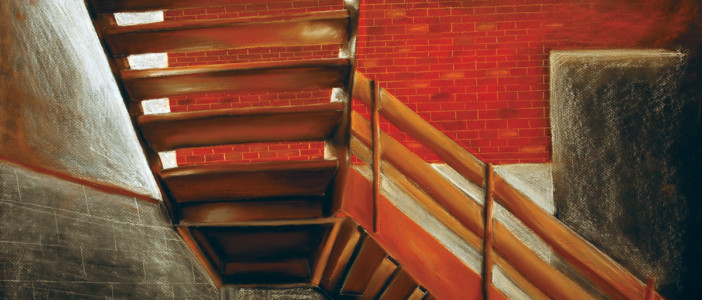
Potential Benefits of Carbolic Acid
By Steven Kibby '16
HONR 191: Molecules that Changed History
Students were asked write the introduction to a grant proposal to a funding agency such as the NIH or NSF, focusing less on the science itself and more on the potential benefits to society. Steven really embraced this assignment by writing this portion of his grant from the perspective of an assistant of Joseph Lister seeking additional funding for his work. It is this creative aspect of the project coupled with solid writing that led to my submission of this work to the writing anthology.
– James Shriver
Several months ago, Dr. Joseph Lister successfully healed the compound fracture of an eleven year old boy. Rather than amputate the fractured leg, Dr. Lister decided to soak lint with carbolic acid, wrap it around the wound, and cover it with a metal sheet to reduce evaporation. Miraculously, the wound healed before infection even occurred. This is very atypical for compound fractures, which nearly always become infected regardless of the surgical dressing. Several more successful treatments of compound fractures using carbolic acid followed, leading us to believe that carbolic acid played some role in the astounding recoveries (Napoleon’s Buttons). If this assumption is correct, further research on carbolic acid may revolutionize surgery of all kinds across the nation in addition to advancing our knowledge of diseases.
The current condition of hospitals and wards is rather appalling. The air flow is poor; it typically smells of sewage or gangrene, and bed sheets are rarely cleaned. With survival rates of only 50-55% for surgeries in typical hospitals and as low as 30% in army hospitals, the state of mind for a patient about to undergo surgery must be extremely wretched (Carbolic 2014). Having a life-threatening surgery performed while under these terrible conditions can only increase pessimism among patients. However, we believe the bad conditions of hospitals and wards cause more than just psychological problems.

Unusual Point-of-View by Shelby Palm
Louis Pasteur’s “The Germ Theory of Diseases” states that there are microorganisms nearly everywhere we go called germs. This idea comes from Pasteur’s experience in the wine industry showing that fermentation is the result of microorganisms acting on sugar. It was also shown when Pasteur boiled broth that these microorganisms died under the harsh conditions, and the broth remained clear rather than turning cloudy (ABPI 2014). If his theory is correct, then microorganisms are thriving in hospitals around the nation due to poor conditions. The germs, as Pasteur calls them, could be multiplying on bed sheets or in the air and being transferred from one patient to the next. For all we know, germs may be making infections far worse and significantly increasing the mortality rate for people undergoing surgeries. Further research on carbolic acid could show that it plays a role in decreasing the amount of germs in a wound, making the infection less severe and therefore increasing the chance of survival.
The standard surgery technique currently involves amputation if a wound is infected. Various other techniques have been attempted including salicylic acid, carbon dioxide gas, and maggots, but nothing has proven more effective at removing an infection than amputation has. However, amputation, while it does get rid of a current infection, will often start a new infection at the site of the amputation known as “hospital disease.” This disease is most likely the reason why there is a 40% mortality rate among patients who have had an amputation (Napoleon’s Buttons). Ideally, any surgery to rid a patient of an infection will have a 0% mortality rate, so the process is far from optimized. If further research is conducted on carbolic acid and it turns out to lessen the severity of an infection, amputations would be much safer, and many limbs may not even need to be amputated in the first place. Carbolic acid use could even be expanded to all aspects of surgery.
If germs are indeed in the air as Louis Pasteur claims, they may be getting into wounds and causing infections. Carbolic acid could potentially decrease the threat of these germs before they even reach a wound. To achieve this, carbolic acid could be sprayed into the air around a patient, making it so the infection could not continue to worsen. However, extensive research would need to be done on carbolic acid before this could become a reality.
Something must be done soon to increase the chance of survival for patients undergoing surgery. The problem may be caused by poor hospital conditions. If doctors and nurses cleaned beds and floors more regularly, infections may not be as severe. Regardless, recent findings from Dr. Joseph Lister suggest that infections could be cured by applying carbolic acid to the wound. Further research must be done on carbolic acid to determine if it does play a role in the removal of infections. If research indicates that carbolic acid is a good alternative to amputation for infections, it may revolutionize surgery techniques nationwide.
Works Cited
ABPI – Resources for Schools. (n.d.). Retrieved October 15, 2014, from http://www.abpischools.org.uk/page/modules/infectiousdiseases_timeline/timeline4.cfm?coSiteNavigation_allTopic=1
Carbolic Steam Sprayer. (n.d.). Retrieved October 15, 2014, from http://artefact.museumofhealthcare.ca/?p=523
Napoleon’s Buttons (17 Molecules that Changed History) by Penny Couteur